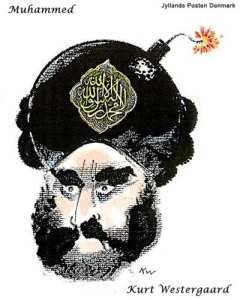Are Men Really Getting the Shaft?
“Study: Men Getting the Shaft” read the headline on Bourque. I’m a man and I find the word shaft pretty titillating, so I clicked it.
The article, whose actual title is Has bias pendulum swung against men? (the shaft part is in the byline: “Fewer college-bound, higher suicide rates, shorter life spans suggest males getting shaft”) begins with this:
Watch network sitcoms and you will find the dolts are usually men.
In TV commercials, it’s always the kids or the mothers who know the real score, not the fathers.
Affirmative-action programs by definition mean women get preference in hiring, school admissions, contracts and promotions.
While some social scientists may see these facts as harmless – or possibly even necessary reconditioning of society to correct past injustices against women – others are beginning to conclude that men are the real victims of discrimination so virulent it is shortening their life spans, causing them to be self-destructive and suicidal, crippling their educational opportunities and destroying a generation of fatherless children.
The article cites a number of facts that apparently support the hypothesis that men are getting royally screwed. Among them, that “boys have inferior reading and comprehension scores and lower graduation rates than girls”, and that the “suicide rates for boys, young fathers and older men range from four to 10 times higher than for their female counterparts.”
But most disturbingly, “Men, whose average life expectancy was formerly on a par with women, are now dying 10 years earlier.”
But is this because of “virulent” “discrimination” or due to other factors?
According to Life Expectancy, an article on About.com, “women almost always have higher life expectancies than men”. But it tells a different story than Shaft, first about the stats, saying the difference is “four to six years in North America and Europe to more than 13 years between men and women in Russia”, and second about the reasons:
The reasons for the difference between male and female life expectancy are not fully understood. While some scholars argue that women are biologically superior to men and thus live longer, others argue that men are employed in more hazardous occupations (factories, military service, etc). Plus, men generally drive, smoke and drink more than women – men are even more often murdered.
In Canada, men have narrowed the life expectancy gap with women to just 4.9 years, according to another article also on About.com, which cites Statistics Canada for the numbers.
So what the heck is with the Shaft article? Where are they getting their numbers? Russia? And who are “they”, anyway?
I can’t answer that last question, since the article is not attributed to anybody. Whoever wrote it isn’t stepping up the plate to claim it. For all we know, the person who wrote the article is from the commission whose findings the author relies on: the New Hampshire Commission on the Status of Men.
I didn’t spend much time on the Commission’s website, because I clicked the Resources link and boy oh boy, what a treasure trove of information I found, mostly on domestic violence.
We’ve got Man beaters behind closed doors – “Domestic violence by women is rising as the balance of power in the home shifts their way” – by Melanie Phillips:
[Research] reveals a remarkably different picture from the feminist stereotype of patriarchal bullies and female victims.
[W]omen are more likely than men to initiate violence against their spouses or companions and are more likely to be aggressive more frequently. Most violence is tit-for-tat. Nor is it the case that women attack men only in self-defence. Among female college students, for example, 29% admitted initiating assaults on a male companion.
…
In line with all this research, the British Crime Survey reported in 1996 that an equal proportion of men and women, 4.2%, had said they had been physically assaulted by a current or former spouse or lover in the past year. Only 41% were injured, and although more women than men were hurt, the difference was not that great: 47% of women injured compared with 31% of men.
There’s The Hidden Side of Domestic Violence: Male Victims:
The most controversial finding, as it would turn out, was that the rate of adult female-to-adult male intimate violence was the same as the rate of male-to-female violence. Not only that, but the rate of abusive female-to-male violence was the same as the rate of abusive male-to-female violence. When my colleague Murray Straus presented these findings in 1977 at a conference on the subject of battered women, he was nearly hooted and booed from the stage. When my colleague Suzanne Steinmetz published a scholarly article, ”The battered husband syndrome,” in 1978, the editor of the professional journal published, in the same issue, a critique of Suzanne’s article.
And then there’s Time to Dispose of Radical Feminist Pork, a stirring little piece that says the US Violence Against Women Act has benefited no one “except the radical feminists on its payroll”:
The Violence Against Women Act’s gender-specific title is pejorative: it’s based on the false, unscientific, unjust and blatantly offensive premise that men are innately violent and abusive toward women, making all women victims of men.
…
Feminists staged tantrums at the suggestion of innate math-aptitude differences between men and women, but the whole premise of the Violence Against Women Act is that men have an innate propensity to violence against women. It’s not because some are bad individuals or drunks or psychologically troubled, but because men want to keep women subservient in an oppressive patriarchal society.
I don’t have the time to examine each of these articles in depth, but each paints a similar picture of domestic violence: women are just as likely to physically abuse their partners as men are. But even in some of these articles, glimmers of a picture that is wholly painted over by articles like Feminist Pork can be seen:
[A]lmost all studies of domestic or partner violence, agree that women are the most likely to be injured as a result of partner violence.
And this, from a scholarly article called Surveillance for Homicide Among Intimate Partners – United States, 1981-1998.
The risk for death from [intimate partner homicide] among males was 0.62 times the risk among females.
…
Approximately one in three homicides of females is committed by current or former spouses or boyfriends, a group collectively referred to as intimate partners. Among male homicide victims, 5% are killed by intimate partners.
To me, this last quote is especially illustrative. In the United States, men have a little more than half as much risk of being killed by an intimate partner than women. Since one in three murders of women are committed by an intimate partner, you’d think that the statistics for men would work out to around one in five murdered by a partner, or perhaps one in six.
Instead, the rate is one in twenty. In other words, if a man is murdered in the US, there is a one-in-twenty chance it was his partner. If a woman is murdered, there is a one-in-three chance it was her partner.
The abuse and murder of men by their partners isn’t something to be taken lightly, even if the incidence and the seriousness of the abuse is significantly lower than for women. And other issues, such as declining academic performance in boys, also deserve serious consideration.
But blaming discrimination against men for their lower average life expectancy is ridiculous. If we stopped drinking, smoking, eating too much, working too hard, and above all, stopped trying to kill each other, we’d probably be able to give women a pretty good run for their money.


 twitter.com/adriandz
twitter.com/adriandz
